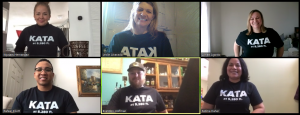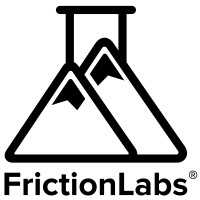Food Manufacturer Takes Kata to a Whole New Level Thanks to Virtual Collaboration
Ready Foods
Company Name
1,000,000
Cost Savings
140,000
Investments in Innovation
Ready Foods was founded in 1972 by Luis Abarca, a Mexican immigrant. Their first kitchen was located in a small meat plant located under the Colfax viaduct. In 1992, the reins of leadership were passed onto his children Marco and Adrianna. They have been able to grow the business from a small facility to four modern food plants with over 200,000 square feet of combined production and storage space. The company now employees over 300 people.
In mid-March, Ready Foods was one of the first companies in Colorado to implement social distancing and work-from-home accommodations. Despite not being able to meet in person, the team was inspired by the results they were seeing from Kata and wanted to continue their journey. Since then, they have conducted thousands of Katas over Zoom. We had a chance to chat with Ready Foods Continuous Improvement Manager, Leslie Alverado, about the experience:
What did you know about Kata if anything before learning it?
Kata was new to us and we were not familiar with even the term, Kata. We had 5 teams (Supply Chain, HR, QA, QA Support, and Training) take the training class taught by Joe Jackman at Manufacturer’s Edge; this is actually a 4-hour session designed to set-up a team Kata, identify a challenge, then determine target conditions to help meet the challenge within 1-year. After that, each team met for 8 consecutive days, at their Kata board each morning, the groups started to see the value in the work they were doing, they began to understand the value in meeting daily.
What were the first Kata 1-year challenges and target conditions you created?
Our Katas were started by the following teams with the following Challenges (1-year goal)-
- Supply Chain – Reduce schedule changes by 80%.
- HR – Achieve goal of being 97% staffed, maintained without temporary employees, achieve 80% or greater (score) on Review Ratings (hourly employees), and reach a 95% Retention Rate.
- QA – Reduce customer complaints that are due to holds by 70%, by shipping quality production on time.
- Maintenance – Reduce eMaint Downtime by 20%, increase our eMaint Mechanics Efficiency by 20%, and Retention Rate to 95%, all while maintaining 0 safety incidents per month.
- QA – Reduce HACCP holds by 50%
- R&D Reduce average recipe creation time by 25% and the count of issues with released recipes by 25%, all while maintaining high morale.
- Sales Increase total sales to $X and number of distributors to X while maintaining high morale.
- Training Team – Ensure 100% of RF employees complete all annual trainings that they are assigned by September 1, 2020, without negatively impacting production schedules.
How did you switch from in-person to virtual Kata and did that work for you?
Most of the support teams started working from home mid-March like many across the nation. We use Zoom for much of our plant-to-plant communication already, so had a little experience meeting virtually already. Fortunately, we had been practicing Kata for about 30-days, it had become routine, we were yielding results, so no one thought it an option to quit, although it did take us some time to re-group and decide how to continue to move forward. While some needed a break to adjust to environmental changes impacting business, everyone was back on-line at their daily Kata by April. At first, the coach used the physical Kata boards that had been hanging in the plant office areas, and updated them via Zoom, but eventually, we transferred to soft-copy boards on Excel and Google Sheets, and kept going. This allowed each team to update their own boards and see the changes via Zoom screen share.
Do you have incremental wins on any of the challenges or target conditions you could share? A success story you could share?
Problem Solving using the Kata method has helped us increase our food safety checks by 10 minutes exceeding the regulatory guidelines. That’s huge! That means we are saving resources and money, which we can pass on as efficiencies to our customers. Kata has helped us question the status quo which makes us better as a team and better for our customers. We also reduced our packing time for a specific product, by 9 minutes per batch, within the first month of practicing Kata. The small improvements in which we focused, added up and we are excited to find out what other opportunities exist in this area.
What’s the future of Kata at Ready Foods?
As of June 1, we have 10 teams practicing Kata, that means we have 10 groups systematically learning how to think scientifically by using data to test beliefs, plus create habits of continuous improvement on a daily basis. We also have a book club of 6 people reading Toyota Kata by Mike Rother. It has helps us understand the concepts as they relate to our own practice. We are only 4-months into this journey, and feel good about the results we have achieved thus far. We also like that this is practical and habitual. Once you start Kata, so don’t stop, you learn how to make it part of your daily routine.
Kata has helped us question the status quo which makes us better as a team and better for our customers. Once you start Kata, so don’t stop, you learn how to make it part of your daily routine.
Leslie Alverado, Continuous Improvement Manager




